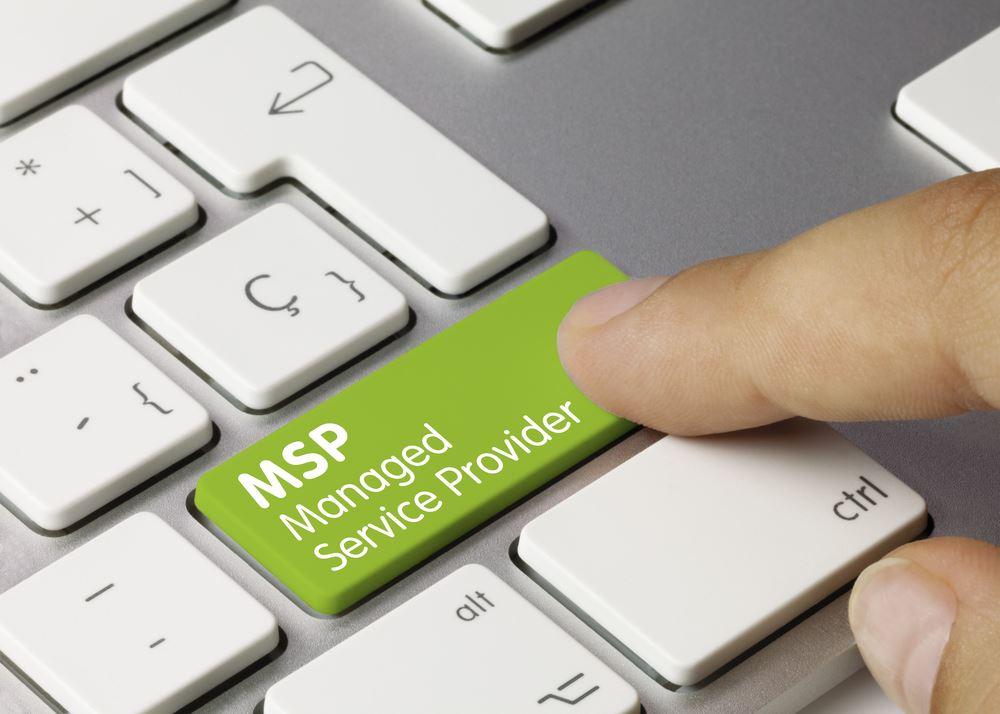IT networks are pivotal in facilitating communication, data transfer, and seamless connectivity in today’s interconnected world. Understanding the fundamentals of IT networks is crucial for organizations and individuals alike.
IT networks form the foundation of modern digital infrastructure, enabling businesses to operate efficiently, collaborate seamlessly, and access resources anywhere globally. This guide aims to provide you with a comprehensive understanding of IT networks, their components, protocols, and functionalities. By gaining insights into these intricate systems, you will be equipped to navigate the complex world of IT networks confidently.
Fundamentals of IT Networks
What are IT Networks?
IT networks are interconnected systems that exchange information and resources among various devices. They serve as a communication framework, facilitating data transmission and collaboration across organizations and individuals.
At its core, the role of IT networks is to ensure seamless connectivity, efficient data transfer, and reliable communication between devices. Whether it’s a small office network or a large-scale enterprise infrastructure, IT networks provide the infrastructure necessary for modern businesses to thrive.
Components of IT Networks
IT networks comprise various components that work together to enable smooth operations. These components can be categorized into two main categories: network devices and network infrastructure.
Network Devices: These devices form the building blocks of IT networks and include routers, switches, modems, access points, and network interface cards. Each device serves a specific purpose in network communication and plays a vital role in transmitting and receiving data.
Network Infrastructure: The network infrastructure includes the physical and virtual components that support network connectivity. This encompasses cabling systems, connectors, wireless technologies, and network protocols. The network infrastructure provides the framework for data transmission and ensures the integrity and security of network connections.
Types of IT Networks
IT networks can be classified into various types, each catering to specific requirements and geographical scopes. Some common types of IT networks include:
Local Area Networks (LANs): LANs are commonly used within a small geographical area, such as an office building or a home. They facilitate communication and resource sharing among devices within the network.
Wide Area Networks (WANs): WANs connect geographically dispersed networks, enabling communication over long distances. They often utilize external service providers and technologies like leased lines or virtual private networks (VPNs) to establish connectivity.
Metropolitan Area Networks (MANs): MANs cover larger areas, typically spanning a city or metropolitan region. They connect multiple LANs and facilitate data transfer over a broader geographical scope.
Wireless Networks: Wireless networks utilize wireless technologies such as Wi-Fi to establish connections without the need for physical cables. They provide flexibility and mobility, allowing devices to connect to the network wirelessly.
Virtual Private Networks (VPNs): VPNs create secure connections over public networks like the internet. They enable remote access and secure communication by encrypting data, making them popular for remote workers and organizations with geographically dispersed offices.
In the next sections, we will explore the protocols and communication mechanisms that underpin IT networks, as well as the topologies and architectures that shape their structure and functionality. Stay tuned for an in-depth exploration of these essential aspects in our comprehensive guide to understanding IT networks.
Network Protocols and Communication
Understanding Protocols
Network protocols are a set of rules and standards that govern how data is transmitted, received, and processed within a network. They ensure that devices can communicate effectively and understand each other’s data formats. Some common network protocols include:
- TCP/IP (Transmission Control Protocol/Internet Protocol): TCP/IP is a fundamental protocol suite used for communication across the internet. It provides reliable and orderly data delivery by breaking information into packets and ensuring their successful transmission.
- Ethernet: Ethernet is a widely used protocol that defines how data is transmitted over wired networks. It specifies the physical and data link layer technologies, such as Ethernet cables and switches, that enable reliable communication between devices.
- Wi-Fi: Wi-Fi is a wireless network protocol that allows devices to connect to a network without physical cables. It utilizes radio waves to transmit and receive data, enabling wireless connectivity in homes, offices, and public spaces.
- DNS (Domain Name System): DNS is a protocol that translates domain names into IP addresses, enabling users to access websites by entering human-readable domain names instead of complex numerical IP addresses.
- HTTP (Hypertext Transfer Protocol): HTTP is a protocol used for transmitting hypertext documents over the internet. It governs how web browsers and servers communicate, enabling the retrieval and display of web pages.
Transmission Control Protocol/Internet Protocol (TCP/IP)
TCP/IP is a foundational protocol suite that enables communication between connected devices. It consists of multiple layers that handle different aspects of data transmission and network functionality:
- Application Layer: The application layer provides protocols that allow applications to communicate with the network. Examples include HTTP for web browsing and SMTP for email.
- Transport Layer: The transport layer ensures reliable and ordered delivery of data between devices. TCP is a commonly used transport protocol that breaks data into packets, sends them, and verifies their successful arrival.
- Internet Layer: The internet layer addresses and routes packets across interconnected networks. IP (Internet Protocol) is the primary protocol in this layer and assigns unique IP addresses to devices for identification and communication.
- Network Access Layer: The network access layer governs the physical connection between devices and the network. It includes protocols and technologies that facilitate data transmission over specific network mediums, such as Ethernet or Wi-Fi.
Ethernet
Ethernet is a widely used technology for wired network communication. It defines the standards and protocols for data transmission over Ethernet cables, allowing devices to connect and communicate within a network. Some key aspects of Ethernet include:
- Basics of Ethernet Technology: Ethernet utilizes a system of switches, routers, and cables to establish connections between devices. It operates based on the IEEE 802.3 standards, which define the physical and data link layer specifications.
- Ethernet Protocols and Standards: Various Ethernet protocols and standards exist, such as IEEE 802.3u (Fast Ethernet) and IEEE 802.3ab (Gigabit Ethernet). These protocols govern data transmission speeds, cable types, and other technical specifications.
Understanding network protocols and communication mechanisms is crucial for building and maintaining efficient IT networks. The next section will explore network topologies and architectures, which define how devices are interconnected within a network. Stay tuned for Section 3: Network Topologies and Architectures, where we delve into the structures that shape IT networks.
Network Topologies and Architectures
Network Topologies
Network topologies define the physical or logical arrangement of devices and connections within a network. Understanding different topologies is essential for designing and managing efficient IT networks. Here are some common network topologies:
- Bus Topology: Devices are connected in a linear bus, with each device sharing the same communication medium. Advantages include simplicity and cost-effectiveness, but a single point of failure can disrupt the entire network.
- Star Topology: Devices are connected to a central hub or switch, forming a star-like structure. It offers easy management, better fault tolerance, and scalability, but a failure of the central hub can affect the entire network.
- Ring Topology: Devices are connected in a closed loop, where each device is connected to two neighboring devices. It ensures equal data distribution and avoids collisions, but a failure in one device can disrupt the entire network.
- Mesh Topology: Devices are complex, and interconnected, providing multiple paths for data transmission. It offers high redundancy and fault tolerance but can be expensive and complex.
- Hybrid Topology: A combination of two or more topologies, allowing organizations to customize their networks according to specific needs. It provides flexibility and scalability by leveraging the advantages of different topologies.
Each network topology has its advantages and disadvantages, and the choice depends on factors such as network size, scalability requirements, fault tolerance, and budget considerations.
Network Architectures
Network architectures determine how devices and services are organized and interact within a network. Here are three common network architectures:
- Client-Server Architecture: In this architecture, clients (devices) request services or resources from centralized servers. It provides centralized control, efficient resource management, and enhanced security but relies on the availability and performance of servers.
- Peer-to-Peer Architecture: In this decentralized architecture, devices communicate directly with each other without the need for a central server. It offers better scalability, easy collaboration, and reduced dependency on a single point of failure, but may have security and management challenges.
- Hybrid Architecture: A combination of client-server and peer-to-peer architectures, offering both benefits. It allows centralized control for critical services while enabling decentralized communication for less critical operations.
The choice of network architecture depends on factors such as the size of the organization, the need for centralized control, the nature of services required, and the level of collaboration desired.
Scalability and Redundancy in Networks
Scalability and redundancy are crucial aspects of network design to ensure network performance, flexibility, and resilience.
- Scalability: Networks need to accommodate growth and increased demands. Vertical scaling involves upgrading existing network components to handle more traffic, while horizontal scaling involves adding more devices to distribute the load. Scalability ensures that the network can support increasing user demands and data volumes.
- Redundancy: Redundancy techniques enhance network reliability and availability. Load balancing distributes network traffic across multiple devices to prevent overloading. Failover mechanisms automatically switch to backup devices or connections in case of failures. High availability ensures uninterrupted network services through redundant systems and backup power sources.
By implementing scalable and redundant network architectures, organizations can meet evolving needs, ensure seamless operations, and mitigate potential points of failure.
Network Services and Applications
Domain Name System (DNS)
DNS plays a crucial role in translating domain names (e.g., www.example.com) into IP addresses, enabling users to access websites using user-friendly names. It functions through a hierarchical structure, with domain names organized into levels and supported by different record types, such as A records (for mapping domain names to IPv4 addresses
addresses), AAAA records (for mapping domain names to IPv6 addresses), MX records (for email routing), and more. DNS is vital for seamless navigation on the internet and efficient communication between devices.
Internet Protocol (IP) Addressing
IP addressing is a fundamental aspect of network communication, enabling devices to identify and communicate with each other. There are two versions of IP addressing:
- IPv4 (Internet Protocol version 4): IPv4 addresses consist of 32 bits and are expressed as four sets of numbers separated by dots (e.g., 192.168.0.1). However, with the growth of the internet, IPv4 addresses have become scarce.
- IPv6 (Internet Protocol version 6): IPv6 addresses are designed to overcome the limitations of IPv4. They consist of 128 bits and are expressed as eight hexadecimal numbers separated by colons (e.g., 2001:0db8:85a3:0000:0000:8a2e:0370:7334). IPv6 provides a significantly larger address space, ensuring the availability of unique IP addresses for future devices and services.
Subnetting and IP allocation techniques are used to manage and distribute IP addresses within networks efficiently, ensuring seamless communication between devices.
Network Security and Firewalls
Network security is a critical consideration to protect against potential threats and vulnerabilities. Some key aspects of network security include:
- Network Security Threats and Vulnerabilities: Networks face various threats such as malware, unauthorized access, data breaches, and denial-of-service (DoS) attacks. Understanding these threats helps in implementing robust security measures.
- Firewall Technologies: Firewalls act as a barrier between internal and external networks, monitoring and controlling incoming and outgoing traffic. They employ various techniques, such as packet filtering, stateful inspection, and application-level filtering, to protect against unauthorized access and potential security breaches.
Implementing comprehensive network security measures and employing firewall technologies help organizations safeguard their networks, data, and infrastructure from potential threats.
Final Words
Understanding IT networks is crucial in today’s digital landscape, as they underpin the connectivity, communication, and data transfer that drive modern businesses and individuals.
By grasping the concepts covered in this guide, you are equipped with the knowledge to design, manage, and secure efficient IT networks that meet your organization’s needs. As technology advances, networks will play an even more significant role, with emerging technologies like Software-Defined Networking (SDN) and the Internet of Things (IoT) reshaping the landscape.
FAQs (Frequently Asked Questions)
What is the difference between a LAN and a WAN? A LAN (Local Area Network) covers a smaller geographical area, such as an office or building, and connects devices within that location. A WAN (Wide Area Network) spans larger distances, such as connecting multiple offices across cities or countries.
How do I choose the right network topology for my organization? Choosing the right network topology depends on the organization’s size, communication needs, scalability requirements, and budget. Assessing these factors and understanding the advantages and disadvantages of each topology can guide your decision-making process.
What are the advantages of using VPNs for remote access? VPNs (Virtual Private Networks) provide secure remote access to organizational networks over the Internet. They encrypt data transmissions, ensuring confidentiality, and allow users to connect to the network as if they were physically present at the office. VPNs enable secure remote work, enhanced data privacy, and access to internal resources.





